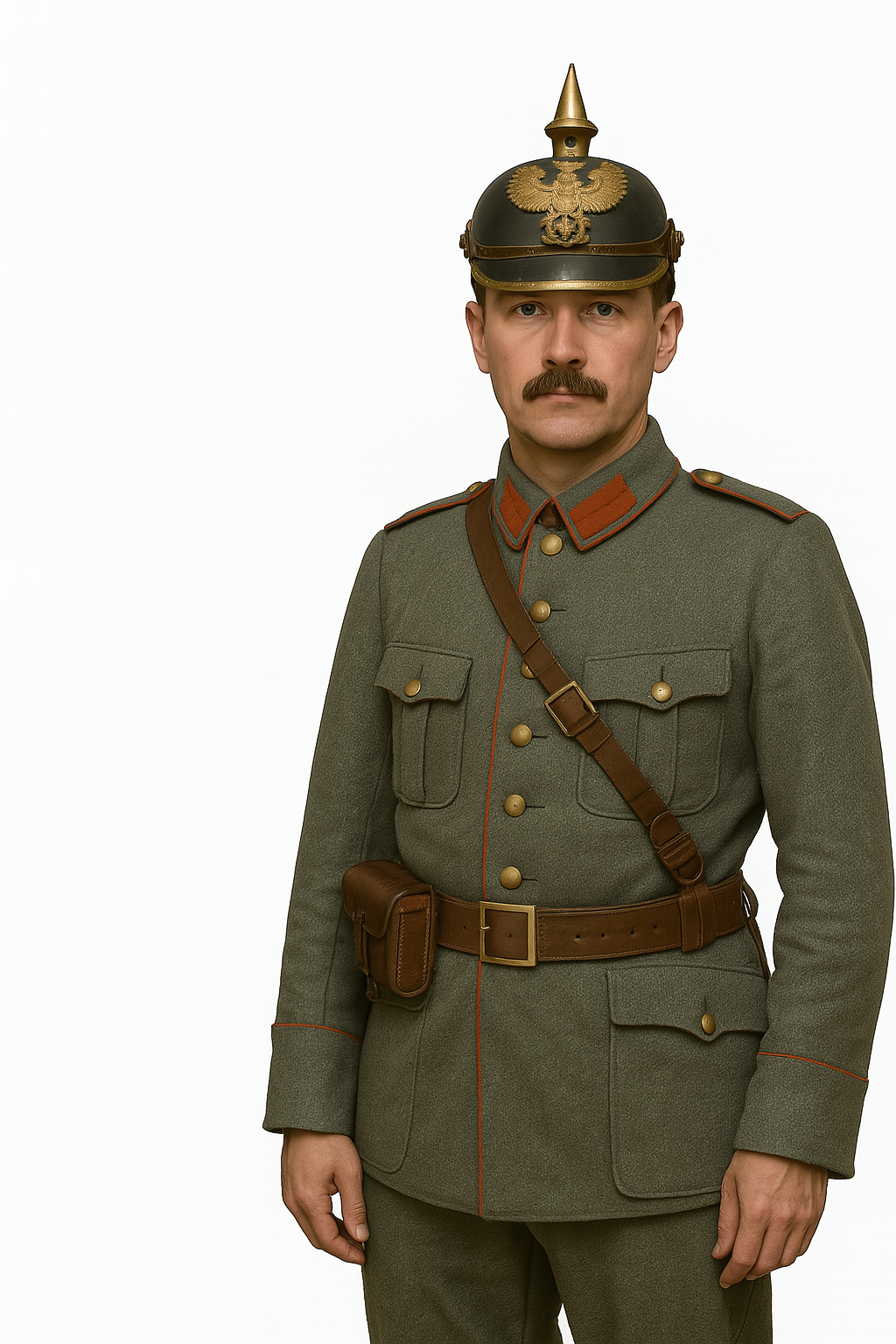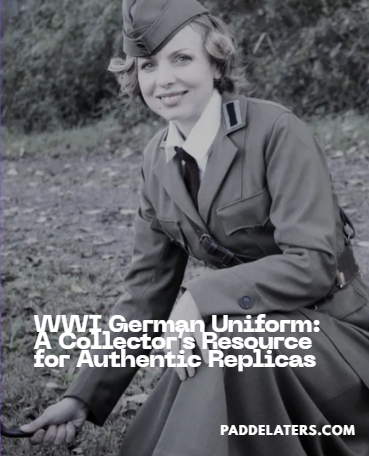
WWI German Uniform: A Collector’s Resource for Authentic Replicas
Published on Jul 25, 2025
🪖 German Uniform WWI: A Complete Guide to Authentic Imperial German Army Uniforms
When collectors, history buffs, or reenactors search for German uniform WWI, they’re usually looking for one of three things: authentic replicas, historical knowledge, or reliable suppliers. Whether you’re preserving military history or building your own collection, understanding the German army uniforms WWI is key. In this guide, we’ll break down their origins, styles, structure, and where to get museum-quality reproductions online.
💡 Did you know? The iconic field-grey "Feldgrau" tunics of the German Empire became a model for military wear in many parts of Europe post-WWI.
📜 A Brief History of German Army WWI Uniforms
The German Empire WWI uniforms evolved rapidly between 1914 and 1918 due to trench warfare and logistical demands. At the war’s onset, most German soldiers wore the M1910 Feldgrau tunic—a wool uniform featuring red piping, brass buttons, and distinct regimental numbers.
However, as the war dragged on, the uniform saw practical updates:
- Camouflage and muted colors replaced showy trims
- Pickelhaube helmets were swapped for the Stahlhelm in 1916
- Equipment became more modular and rugged
These changes weren’t merely aesthetic; they reflected a strategic shift in military doctrine and battlefield survival.
👔 Key Components of a WWI German Army Uniform
ItemDescriptionTunic (Feldbluse) | M1910 or M1915 wool field tunic, grey-green color
Trousers | Straight cut, matching wool with piping
Pickelhaube | Spiked leather helmet used until 1916
Stahlhelm | Introduced in 1916 for better head protection
Greatcoat (Mantel) | Heavy wool overcoat for cold trench conditions
Belt & Gear | Leather Y-straps, ammunition pouches, bayonet frog
Boots | Marching boots or ankle boots with gaiters
🎖️ Variants by Division & Rank
Not all uniforms were the same across the empire. Officers often had tailored versions made with finer wool and silver/gold piping. Units such as Infantry, Artillery, and Uhlans (light cavalry) had distinctive insignia and headgear.
Unit TypeUniform DifferenceInfantry | Standard Feldgrau, red piping
Artillery | Black cuffs and collars
Cavalry | Often retained traditional uniforms longer
Officers | Higher-quality fabric, personal tailoring

🧵 German Empire WWI Uniforms: What Makes a Reproduction Authentic?
Authenticity lies in attention to historical detail. From exact shade of Feldgrau to stitch patterns and regimental insignia, everything matters. At Paddelaters.com, we specialize in high-quality replicas that honor this heritage.
Explore our Imperial German Army WWI uniform collection here:
👉 World War One WW1 Imperial German Army Uniforms
🧭 Where to Find Authentic WWI German Uniforms Today?
With rising demand for historical accuracy in film, museums, and reenactments, quality reproductions have become a sought-after niche. The key is finding a supplier that balances historical precision and durability.
Paddelaters.com is proud to serve collectors globally with:
- WWI German army tunics, trousers, and gear
- Accurate stitching and button detailing
- Blog resources for learning and collecting
You can start with these in-depth reads:
- 📖 The WWI German Uniform: Exploring Authentic Tunics, Hats, and Historical Legacy
- 📚 Inside the WW1 German Outfit: Authentic Uniforms 1914 Reproductions & Collector’s Guide
🔍 Differences Between WWI and WWII German Uniforms
Though both eras featured sharp design and engineering, the uniforms differ significantly:
FeatureWWIWWIIColor | Feldgrau (grey-green) | Field Grey, later olive
Helmet | Pickelhaube → Stahlhelm | Stahlhelm (improved version)
Insignia | Regimental numbers | National eagle, SS runes
Tunic Cut | Boxy, high collar | More ergonomic, open collar
Want to compare both? Visit:
👉 WWII German Army Uniforms
🛒 Buying Tips for Collectors
- ✔️ Check for wool quality: Real uniforms used thick wool that kept soldiers warm in the trenches.
- ✔️ Inspect insignia: Regimental numbers, cuff titles, and collar patches reveal a lot about unit and rank.
- ✔️ Ask about tailoring: Most suppliers offer standard sizes, but a custom cut is ideal for reenactments.
- ✔️ Match your gear: Don’t buy a tunic without the correct belt or helmet. Consistency matters.
🎯 Who Buys WWI German Uniforms Today?
This niche attracts a diverse audience:
- Military Historians: Preserving history through artifacts
- Film Studios: Authentic props for period dramas
- Reenactors: Realistic field setups for events
- Collectors: Building private or museum-quality collections
- Cosplayers: High-end costumes for historically inspired portrayals
📌 Conclusion: Why German Uniform WWI Still Matters Today
The WWI German uniform isn't just a relic of history—it’s a symbol of industrial, cultural, and military design. Whether you're a history lover or a professional reenactor, choosing the right reproduction pays homage to the legacy of those who wore it.
At Paddelaters.com, we ensure that every product matches authentic specifications, so your collection or performance is not just accurate, but inspiring.
